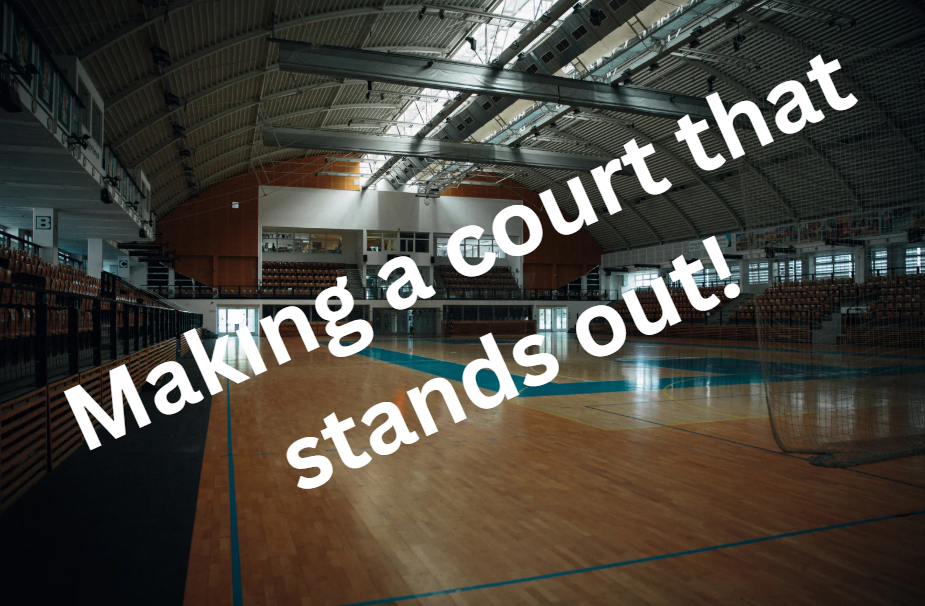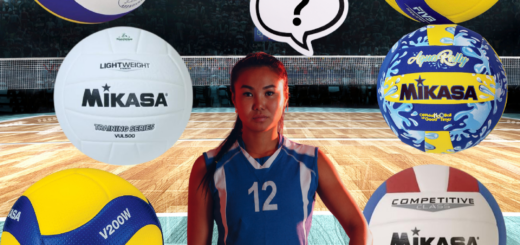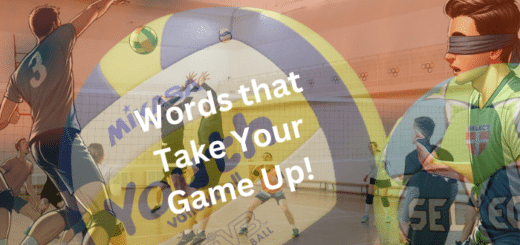How to Build a Volleyball Court: Full Guide from Groundwork to Game Ready

Building a volleyball court requires more than leveling a surface and adding sand. Every step must be thought through, starting with site conditions and ending with installation of the final equipment. If the base layers are not done correctly, the court will develop drainage problems, uneven surfaces, and maintenance issues that are difficult to reverse later. A solid gravel foundation, proper measurements, and controlled layering all work together to ensure the court holds up under regular use. This guide breaks down each phase of construction in practical detail, helping you prepare a court that performs well from the ground up.
Choose the Location
The location of a volleyball court influences drainage performance, play quality, and even how much maintenance you’ll need in the future. Before you dig or plan any materials, walk your potential site at different times of the day.
Check for natural slope, shaded areas, wind exposure, and any signs of water retention after rain. Avoid spots at the base of a hill or within runoff paths unless you plan to install complex drainage systems.
Even a slight incline can help with water flow, but too much slope means more groundwork and cost.
Besides the terrain, consider the surroundings. Trees with spreading roots or overhanging branches can damage the court and drop leaves, making cleanup frequent. Nearby fences, buildings, or roads may affect ball control and pose safety concerns. A flat, open space with at least two meters of buffer beyond the court boundaries provides enough room for movement and reduces impact risks.
If the area tends to flood or drain poorly, you’ll need to excavate deeper and rely heavily on gravel and proper layering, which we’ll cover later in this guide.
Mark the Court Dimensions
First of all, you will need to take proper measurements for your court. Before hauling in gravel or sand, you must outline the full court, including playing surface and buffer zones.
The standard size for a beach volleyball court is 16 meters long by 8 meters wide. These are the actual game boundaries, but they are not enough by themselves. Players move fast and wide, so the total cleared area should extend at least 1.5 to 2 meters beyond each side. Without this, injuries become more likely and gameplay feels restricted.
Use durable string or marking paint to define the edges.
Measure each corner multiple times and use the 3-4-5 triangle method to confirm right angles. A court that isn’t squared off properly will cause problems later when installing net posts or boundary lines. Double-check diagonal measurements as a final step to ensure symmetry across the layout.
Once the rectangle is locked in, step back and visualize movement flow. This is where you may notice that a nearby tree or slope interferes. Make adjustments before the ground gets disturbed. Accurate marking reduces rework and keeps excavation aligned with your material estimates.
Excavation and Base Preparation
Once the layout is measured and marked, the physical work begins.
The soil must be excavated to a depth of around 12 to 18 inches. This accounts for both the gravel base and the sand playing layer.
If your site has poor natural drainage or heavy clay content, go deeper. Removing enough soil at this stage helps prevent water buildup and keeps the sand layer from shifting over time.
After digging, now you need to add gravel, which would create the foundation for drainage, structural support, and long-term court stability.
For most sand volleyball courts, a 4 to 6 inch layer of compacted crushed gravel is ideal. Choose angular crushed stone rather than rounded river rock. Angular particles lock together more effectively, preventing movement under load and allowing water to filter through easily.
You’ll want to calculate the right amount of gravel before ordering. Guesswork often leads to underbuying or overspending.
To make this easier, calculate gravel volume for court base through a proven online tool that is made for construction projects like this and gives precise volume estimates based on the court size and desired gravel depth.
Once spread, compact the gravel with a plate compactor. It should feel firm underfoot, with no soft patches or loose spots. If the court feels uneven at this stage, the problem will only get worse once the sand is added.
Add a Geotextile Fabric
Many court installations skip this step, but professionals rarely do. A layer of geotextile fabric between the gravel and sand significantly improves the durability and drainage of the court. Its main job is to keep the fine sand from filtering down into the gravel over time.
Without a barrier, the sand slowly works its way into the base, causing settling, uneven surfaces, and drainage issues that often require early repairs.
Use a woven or non-woven geotextile designed for soil separation and drainage. It should be water-permeable but dense enough to block sand migration.
Roll the fabric over the entire gravel layer and allow it to overlap at the seams by at least 12 inches. Secure it with landscaping staples or gravel weight to hold it in place while installing the sand above.
This layer also prevents weeds from coming up through the court, something that becomes difficult to manage once sand is added.
In areas with a lot of rain or fine silt in the soil, the fabric helps keep the court playable by preventing water from pooling. It forms a clean divide between the structural support and the playable surface, which leads to a better experience for players and lower maintenance in the long run.
Pour and Level the Sand Layer
The sand layer defines how the court feels underfoot and how safe it is during play. Once the gravel and fabric are in place, begin pouring in clean, washed sand. The recommended depth for beach volleyball courts ranges from 12 to 18 inches. Anything less increases the risk of injury during dives or falls, especially in competitive settings.
Look for sand that drains well and does not compact too tightly. Avoid mason sand or sands with too much silt, as they tend to harden over time and retain water.
Distribute the sand evenly across the entire surface using shovels, wheelbarrows, or mechanical spreaders for larger areas.
Start from one side and work gradually to the other, aiming to build consistent layers. Don’t pour it all at once if you’re working manually. Add 4 to 6 inches at a time and level each layer with a landscape rake before continuing. This prevents the sand from settling unevenly later.
After the full depth is installed, walk across different sections to test for soft spots or buildup. Rake again as needed to smooth out any inconsistencies.
A well-leveled surface plays better and lasts longer. If the court is exposed to wind or has surrounding grass, consider installing perimeter boards or edging to prevent sand loss. Over time, regular top-ups may still be required, especially if players frequently jump or land in the same zones.
The quality of your playing surface will be remembered more than anything else. Sand that feels right makes people want to come back and play again. Take your time here. This layer is what brings the court to life.
Install Net System and Court Boundaries
After the sand layer is leveled, the final step involves setting up the playing equipment. The net system must be installed securely and at regulation height.
For men’s play, the net should be positioned at 2.43 meters. For women’s games, it should be set at 2.24 meters. Poles should be anchored firmly outside the playing area, with guy wires and ground stakes used to maintain tension without interfering with movement.
If you’re installing sleeves in concrete footings, make sure their placement matches your earlier measurements. Inaccurate pole alignment can throw off the entire court, both visually and in play.
The court boundaries come next. Use weather-resistant webbing or nylon boundary lines with corner anchors that can be adjusted as needed. Lines must lie flat against the sand to reduce tripping hazards. If wind is a concern, some people add sandbags or weighted corner ties to keep lines in place during play.
Take this time to recheck all measurements. Make sure your boundary lines match the official court dimensions exactly. If the court will be used for both casual and competitive games, consider adding markers or adjustable net sleeves for different height settings.
This final stage transforms the space from a construction site into a ready-to-play court. With equipment installed and lines drawn, all that remains is for the players to arrive.
Conclusion
A well-built volleyball court is the result of careful planning, reliable materials, and proper execution at each phase. What happens underneath the sand, particularly the quality of the base and drainage is what makes or breaks the playing experience. Skipping those early steps usually means dealing with surface issues, poor drainage, or even costly rework. If you’re preparing a court base and need to estimate how much gravel to order, use a trusted gravel volume calculator that can handle these measurements precisely. The more accurate your foundation, the better your court will serve the game and everyone who plays on it.

Ahmed is the founder of Ball and Net Sports, a platform where he writes about volleyball.
As a professional volleyball player who has participated in various national and international level volleyball competitions, he loves to teach other volleyball enthusiasts about the game.
He is now a professional volleyball coach who organizes volleyball camps and social events for talent hunting for top volleyball teams.
As a volleyball talent-hunting specialist, he loves to teach people how they can make their game better in the fast-paced volleyball environment where it is extremely difficult to get quality content free of cost.



